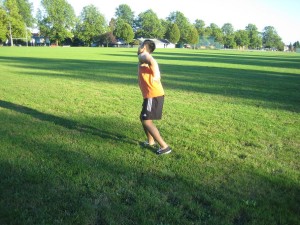The high-impact nature of running can be accompanied by some aches and pain. This is true for the back since the spinal discs absorbs most of the shock once the foot strikes the floor.
While extreme running differs from one individual to another, constant running periods without any rest can increase the risk for back pain. A doctor should be consulted before starting a running program or if the individual is suspected with back injury due to excessive running.
Impact caused by running
It is important to note that running can either contribute or cause back pain. Some runners end up with back pain since they have a current condition such as an injured spinal disc that can be aggravated by running.

Excessive running can also contribute to back pain since it causes muscle strain from constant use. While running, the feet absorb the impact which is sent up the legs and to the spine where the spinal discs absorb the shock. The repetitive pace of running can place continuous strain on the spinal discs, thus causing pain, damage, tingling and numbness.
Strenuous running
It is important to note that exercise burns down calories, builds up muscle and achieve respiratory and cardiovascular fitness. On the other hand, an individual can exercise including running too much. There is no specific formula on what is considered as excessive running. This is why it is vital that the individual knows how to listen to his/her body. Once the individual experiences pain and aches after a few days of running in a row, it is recommended to take a break. Another good recommendation is to vary the duration of the running sessions to minimize the impact and strain on the back.
Recommendations on cross-training
If the individual experiences chronic back pain linked to excessive running, it is recommended to find balance in his/her exercise routine. This typically involves switching a few of the usual running sessions for exercise that is low-impact such as swimming, walking or cycling. Strength-training sessions can also be added to the regular routine. Remember that stronger muscles especially in the abdomen can provide stability to the back.
Prevention
During days when the individual runs, back pain can be prevented with thorough warm-up before the activity. This includes walking or a light jog before moving on to a full running speed.
Consistent stretching of the hamstring muscles on the back of the legs can also help. They should be stretched two times a day to minimize the pull of the hamstrings on the lower back. It is also vital to wear comfortable shoes and replace them regularly to properly absorb shock. Once the individual experiences pain or discomfort, the individual should take a break from running. If left untreated, back pain due to overuse can trigger a cascade of health symptoms including sciatica that can cause nerve damage to the legs.
